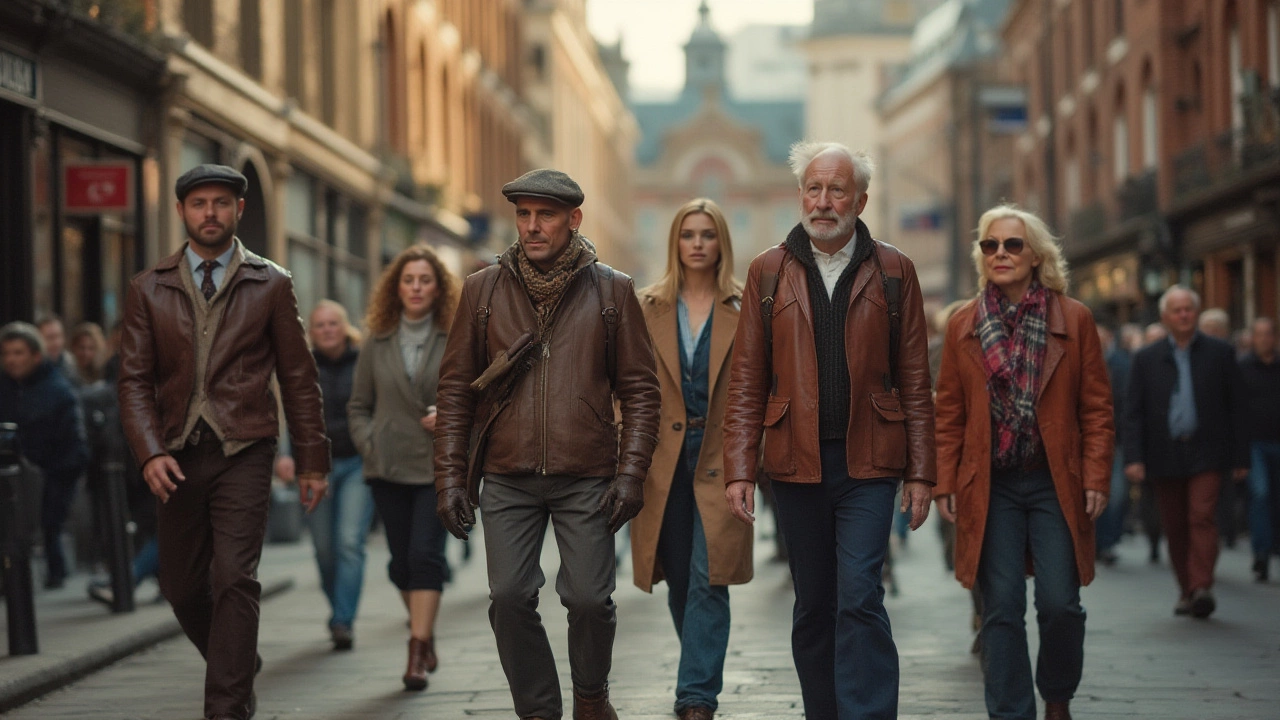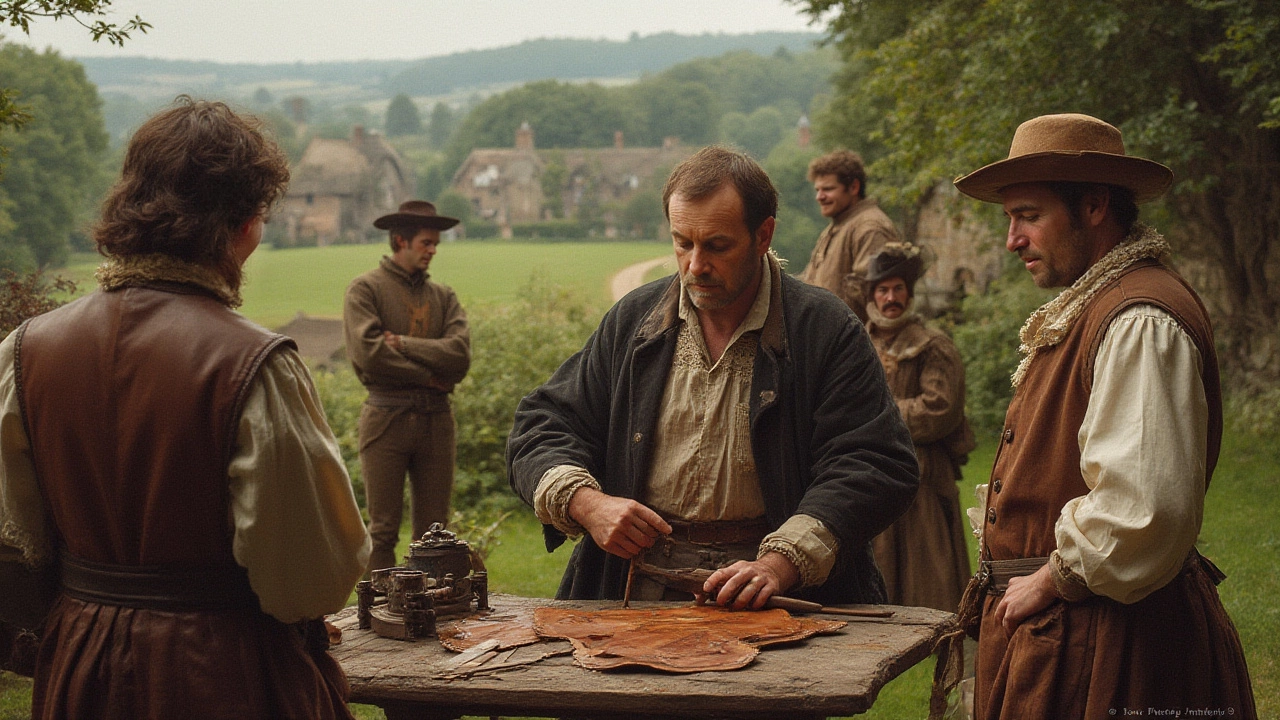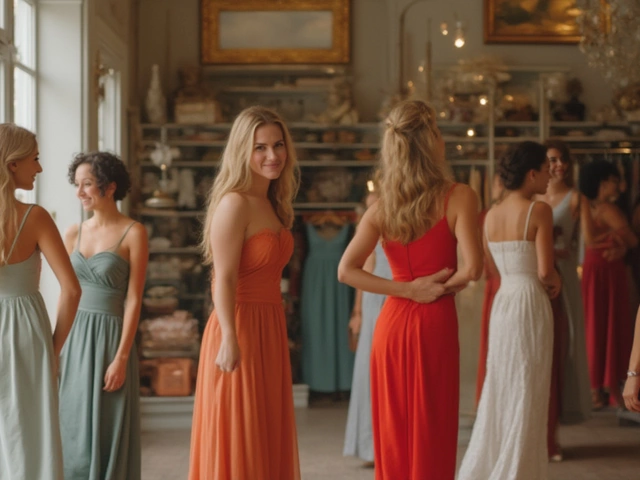Jerkin Jacket: History, Style, and Modern Fashion Trends

- Cleo Fairchild
- 13 July 2025
- 0 Comments
Picture a jacket that feels halfway between medieval armor and artsy street style. Back in the day, the jerkin jacket wasn't just a practical layer—it was a statement. The jerkin first showed up in England around the 16th century. Nobles and soldiers alike sported it, sometimes stitched snug, sometimes loose, but always meant for layering. Weird name, right? 'Jerkin' actually has a mysterious root, with no clear meaning, but by the 1500s, everyone from royalty to regular folks had opinions about them. The material depended on how much clout you had; you’d see fine leather jerkins for the rich and rougher, simpler versions for those working in the fields.
The Origins and Evolution of the Jerkin Jacket
Let’s step into the time machine—not the high-tech kind, but the one you build with curiosity. The jerkin emerged first in Tudor England, sometime in the early 1500s. This garment wasn’t just about keeping out the wind; it fit right over the ever-popular doublet (that was pretty much the men’s 'shirt' of the day, but way fancier). Early jerkins were sleeveless and simple—a sort of ancestor to modern vests, usually made of soft, tanned leather. Leather was all the rage because it was tough but flexible. A tailor might line it with silk if your bank account looked healthy, or toss in some felt if you were more wallet-conscious.
What’s wild is that for over a hundred years, the jerkin stuck around while fashion everywhere else changed at breakneck speed. You could spot a sailor, a courtier, or even a teacher, each with a slightly different-flavored jerkin. In the 17th century, the shape morphed—some sprouted sleeves, some gained elaborate embroidery, and colors suddenly mattered more than ever. Jerkins got shorter, then longer. They were military uniforms, casual wear, or even stage costumes for Shakespearean actors. That’s quite the style résumé.
The jerkin quietly faded out of mainstream wear by the 18th century. For a hot second, the word “jerkin” got recycled during World War II: British soldiers wore canvas jerkins as part of their uniform, completely functional and a world away from the ornate old versions. Even though jerkins no longer fill closets, the shape and concept bleed into today’s waistcoats, vests, and even some modern bomber jackets.
| Era | Main Material | Features | Who Wore It |
|---|---|---|---|
| 1500s | Leather | Sleeveless, fitted | Court, military, merchants |
| 1600s | Leather, velvet | Slashed, sometimes with sleeves | Court, theater, tradesmen |
| WWII | Canvas, leather | Utility pockets, loose fit | British soldiers |
Design Details: What Sets a Jerkin Jacket Apart
The jerkin plays this cool balancing act between tough and tailored. Its silhouette stays pretty steady: sleeveless, ending below the waist, sometimes longer for drama. The cut was built for movement but also for warmth. The star feature is the jerkin jacket’s open front, usually fastened with decorative buttons or ribbons. If you picture the Shakespeare era, you’re not far off.
Sleeveless jerkins helped all the other clothes get their moment—those ruffled cuffs and embroidered doublets looked much better poking out from a jerkin’s wide armholes. When sleeves were added (mainly in the 1600s), they could be laced on or off depending on the weather or your plans for the day. Some jerkins even had slashed panels—a sign of high status, since only the fancy could afford to 'waste' fabric for looks.
Back then, everything was about individuality and showing off status, so the most expensive jerkins had embroidered family crests, velvet trims, or metallic thread. Middle-class jerkins might look more pared-down, but the sturdy leather was sometimes stained with onion skin or walnut husks for a deep brown color.
Jump forward a few centuries, and function became the focus again during wartime. Utility jerkins were simple, boxy, and designed to layer over heavy sweaters. Modern designers love referencing vintage jerkins, especially with waistcoats sporting bold buttons, or vests that echo the shape with updated fabrics.
Want to spot a jerkin at a museum? Look for deep armholes, sturdy stitching along the edges, and fastenings right down the front. For real-life fashion inspo, check out menswear designers who love bringing military history to the runway. Streetwear brands have even tried sleeveless canvas jackets that wink at the jerkin, pairing them with hoodies or graphic tees for a current twist.
And about materials: old-school jerkins used deerskin or sheepskin (which was softer and held dyes better). Makers tanned hides with oak bark, which kept the leather flexible. Silk linings were highly prized. Worried about cleaning? The answer was as simple (and rugged) as wiping with a damp cloth and airing it out—no dry cleaners in the 1550s.

How the Jerkin Jacket Influences Modern Fashion
If you think vintage jackets are just for a history lesson, think again—the jerkin’s DNA is all over men’s and even women’s outerwear today. Street-style stars and costume designers both love riffing on this old-school shape. Look at military-inspired vests or tailored waistcoats; designers from Vivienne Westwood to Raf Simons have sent jerkin-esque looks down the runway.
The reason? The jerkin nails that balance: protective but not bulky, with enough tradition to look interesting, but not so old-fashioned that you feel like you're in a Shakespeare play. Today, vintage-loving brands turn out sleeveless leather vests with detailed buttons, or wool jerkins that layer perfectly over tees and turtlenecks. If you’ve ever worn a utility vest, you’ve worn something inspired by the jerkin. Ever spotted a sleeveless bomber jacket in a thrift shop? That’s a distant cousin.
And jerkins have a bit of a cult following. There’s a whole world of Renaissance fairs and reenactments where fans aim for historical accuracy—right down to the type of leather used. Meanwhile, in streetwear, brands sometimes revive the jerkin silhouette in unexpected fabrics—canvas, nylon, even denim—for a modern touch. If you're into cosplay or theater, you’ll know that any period costume wardrobe is lacking without a couple of jerkins hanging up.
But it’s not all about nostalgia. The jerkin feels timeless because it solves practical problems: it adds warmth without restricting arms, works as an extra layer under heavy jackets, and provides a structured look for anyone who’s a bit tired of puffer vests or basic blazers. Some brands have even started marketing them as eco-friendly alternatives, using recycled leather or plant-based dyes, pulling ideas from their historic roots.
Tips for Styling and Finding a Jerkin Today
Curious about trying the jerkin look in your own wardrobe? Whether you’re hunting for a vintage piece or just want to channel a bit of that old-world cool, there are some handy tips. First, fit is everything. A jerkin should hug the shoulders and leave enough space underneath for at least a sweater or thick shirt—no need for it to button tight or feel restrictive.
- Pair a leather, sleeveless vest (or modern jerkin-inspired vest) over a crisp white shirt, dark jeans, and boots for a look that reads "classic but cool."
- For something more dramatic, layer a tailored jerkin vest over a turtleneck, add slim trousers, and finish with Chelsea boots.
- If you want a streetwear angle, wear a khaki or canvas vest over a lightweight hoodie, joggers, and sneakers. A beanie finishes the look.
For women, jerkins work like a power vest. Layer one over a midi dress or skirt-and-tee combo to throw a bit of edge on a feminine look. Add boots or chunky sneakers to keep things balanced.
Finding a true vintage jerkin isn’t easy—they’re rare in thrift shops, but you might spot something similar in military surplus stores, costume shops, or high-end vintage boutiques. If you’re hunting online, keywords like “waistcoat vest,” “leather sleeveless jacket,” or “Renaissance jerkin” help. For the DIY crowd, making a jerkin is doable with some basic sewing skills and a pattern pulled from a historical costume book.
Caring for your jerkin? Vintage leather should be conditioned every few months, kept away from crazy sunlight, and stored on a padded hanger so it doesn’t lose its shape. Wool jerkins can be gently brushed and spot cleaned. Don’t even think of tossing it in the washer!
So if you’re ready to ditch boring sweaters or want to add some Renaissance drama to your look, the jerkin jacket is a no-brainer. It’s impossible not to look a little bit interesting when you’re wearing a piece with centuries of cool built in.


